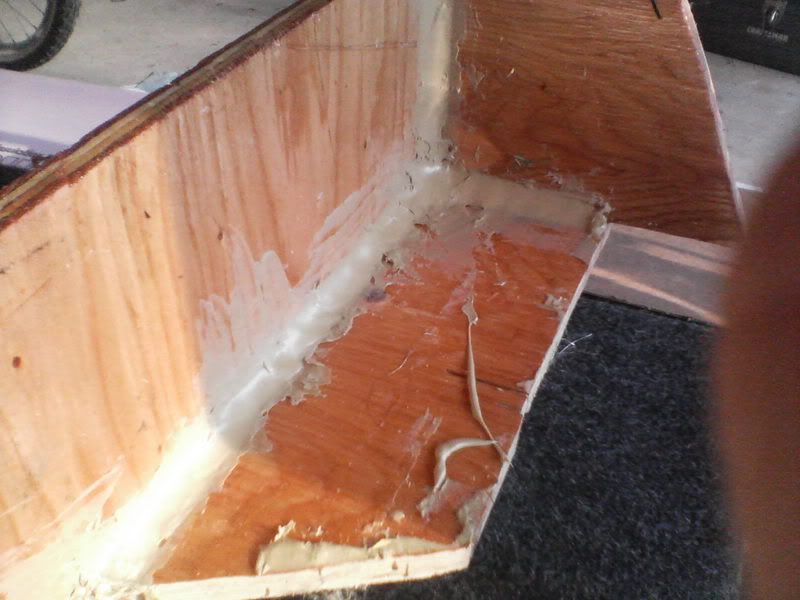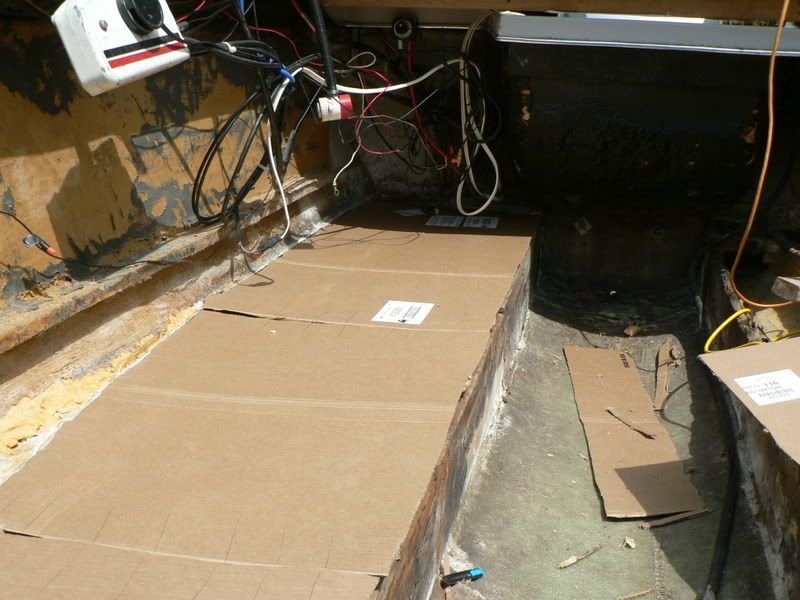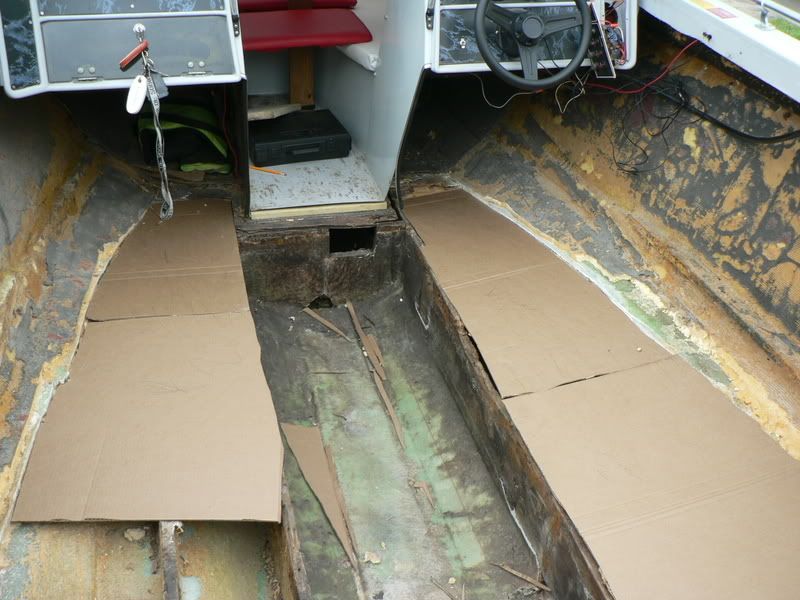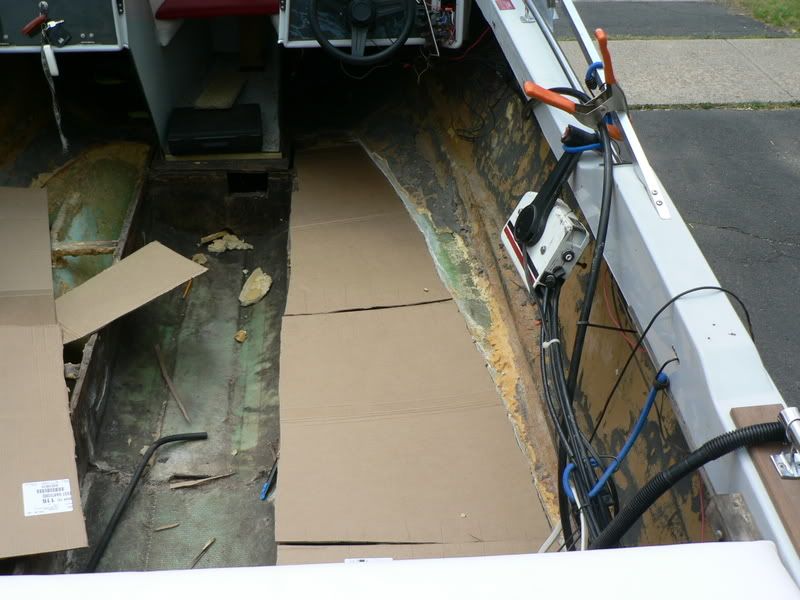KnottyBuoyz
Senior Chief Petty Officer
- Joined
- Mar 6, 2006
- Messages
- 712
Re: What to resin
You'll need to radius those corners somehow. Traditional method is to create a fillet with thickened epoxy and filler (chopped mat, colloidal silica, wood flour etc.) This allows the glass to make a gradual transition from one surface to the other.
Here's a good illustration of fillets in a S&G project.

The theory behind the practice is that fiberglass is strongest when the fibers in the material are kept straight. Bends, especially sharp bends weaken the fibers and they'll eventually fail. Most woven fabrics will have poorer performance structurally than biaxial fabrics, which have all the layers of glass oriented in straight lines overlying each other and running at various degrees from one another.
This is why woven roving is a poor choice for structural use. It is often used in older boats and older methods but relies, IMHO, too much on the structural qualities of the resins used. Similarily mat provides little, if any, structural benefit to a fiberglass lay up. What it does do is provide a medium for a heavy fabric to adhere better to a core, such as plywood, by filling in the voids between the weft and weave of the fabric. It is also most commonly used on top of a woven fabric to help fill in the same voids so that the pattern of the underlying fabric doesn't "print through" quite as much.
Good luck with your project.
You'll need to radius those corners somehow. Traditional method is to create a fillet with thickened epoxy and filler (chopped mat, colloidal silica, wood flour etc.) This allows the glass to make a gradual transition from one surface to the other.
Here's a good illustration of fillets in a S&G project.

The theory behind the practice is that fiberglass is strongest when the fibers in the material are kept straight. Bends, especially sharp bends weaken the fibers and they'll eventually fail. Most woven fabrics will have poorer performance structurally than biaxial fabrics, which have all the layers of glass oriented in straight lines overlying each other and running at various degrees from one another.
This is why woven roving is a poor choice for structural use. It is often used in older boats and older methods but relies, IMHO, too much on the structural qualities of the resins used. Similarily mat provides little, if any, structural benefit to a fiberglass lay up. What it does do is provide a medium for a heavy fabric to adhere better to a core, such as plywood, by filling in the voids between the weft and weave of the fabric. It is also most commonly used on top of a woven fabric to help fill in the same voids so that the pattern of the underlying fabric doesn't "print through" quite as much.
Good luck with your project.























